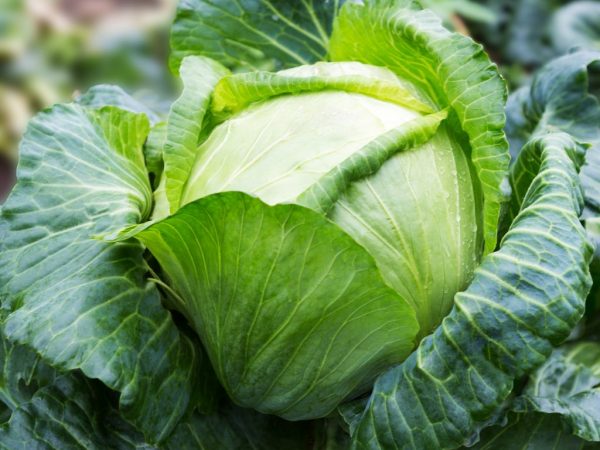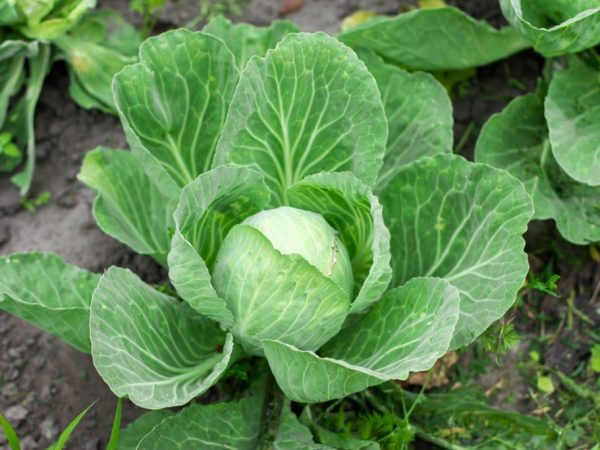Description of cabbage Farao f1
Farao cabbage is an unpretentious variety, resistant to sudden changes in temperature, drought or heavy rain.

Description of cabbage Farao f1
General characteristics of the variety
Farao f1 cabbage is an early ripening hybrid. The early ripening period allows you to harvest the first harvest of the variety as early as 65 days. The culture is suitable for growing under temporary shelter, in greenhouse conditions and on open land. The total growing season is 63 to 65 days.
The hybrid cabbage retains its presentation during transportation (heads of cabbage are stored for a long time until harvesting). Planting a large amount of cabbage on a small plot of land is allowed. To obtain a good harvest, highly fertile soils or ordinary soil fertilized with mineral complexes are used.
The Farao hybrid is harvestable even in poor conditions (unfertilized soil, minimal watering and no fertilization). The Farao hybrid is grown using early planting: the variety is suitable for germination in greenhouses of different structures. Heads of cabbage after such planting grow weighing from 1.5 to 2 kg.
Description of the head
According to the description, the Farao hybrid matures within 2 months. The weight of the heads of cabbage reaches 3 kg. Their structure is dense and moderately watery. The dense heads have a bright green color, uniform and rich.
The f1 variety is stored for up to six months in a dark, cool room. Heads of cabbage do not lose their presentation, they are used to prepare various dishes. Description of the f1 grade head:
- high outer stump;
- round smooth heads of cabbage;
- excellent taste;
- non-cracking heads.
The head of cabbage has slightly bubbly leaves. The dense leaves are kept on a short stump (the outer stump is several centimeters longer than the inner stalk). The weight of one head depends on the crowding of the planting (how close the seedlings were planted). If you cut it, the inside of the leaves will be white and juicy.
The variety is distinguished by its high density and uniformity. The Farao f1 variety is distinguished by its high content of vitamins. One head contains vitamins A and C. Other useful components of cabbage are calcium and iron.
Application of the vegetable
Cabbage is suitable for preparing various dishes.
The early crop is planted for sale or for consumption, and the late crop is planted for storage for the winter. Medium-sized vegetable leaves are suitable for making stuffed cabbage rolls or dishes that require a strong but juicy base.
The variety has a good density of leaves, which does not allow them to stick out during cooking or roasting.

Cabbage has a sweet taste
Early culture is easy to freeze, but it does not lose juices. The vegetable is suitable for canning, cooking sauerkraut. The plant is used to decorate seasonal salads. You can store the heads of the variety in a cellar or pantry, which does not warm to room temperature. It is better not to leave the head of the variety on the window under the influence of direct sunlight: the upper leaves will quickly wither.
Early cabbage has a sweet taste. A juicy head of cabbage is cut into slices, which are used to decorate dishes.White cabbage is used for making salads, pickles or preparations for the winter. The hybrid is used for sale: it is easy to transport and does not suffer during transportation. The head of cabbage is stored all winter and retains its beneficial properties.
Growing and care
The hybrid needs proper planting and care. Before planting, the seeds are cleaned and strengthened with special solutions (epin, zircon, humate). Weak seedlings are watered and fertilized. After planting in open ground, the cabbage sprouts quickly. A suitable area for planting seedlings is the sunny side of the garden. It is necessary to ventilate the area, but you cannot plant cabbage in a draft. The irrigation system depends on the location of the seedlings. Crops growing in confined conditions need additional soil moisture. In the shade, seedlings are watered less frequently to avoid rhizome rot.
For a hybrid, the neighborhood is important: the variety gets along well with root crops, after potatoes or legumes, the first early seedlings can be planted.
General care of the crop includes regular watering, thinning the beds, hilling and loosening the topsoil. It is important to regularly feed; for this, organic fertilizers are used.
Do not fill the beds: abundant watering leads to rotting of the rhizome and stump.
Diseases of the variety
Farao f1 variety - white cabbage, resistant to common diseases. If the seeds are soaked in a timely manner, the seedlings will not suffer from fungal diseases. The early cultivar is threatened by the keel. This is a disease that leads to tumors on the root of the cabbage. It appears when the air temperature is above 24 ° C and in acidic soil, therefore, to prevent it, it is necessary to apply mineral fertilizers to the soil. To combat the keel, prophylaxis is carried out: organic matter is introduced, liming is carried out. As soon as the cabbage root begins to wilt, the diseased plant is removed.
Rot is a common disease in garden crops. Such a disease threatens weak seedlings, which did not have time to get stronger before planting in open ground. The variety can get sick from neighboring crops that were not removed from the garden in time. Sick heads of cabbage are removed.
To preserve, the rest of the crop is collected in a timely manner and stored in a disinfected room. Disease prevention (soaking seedlings) avoids rot. If spots appear on the head of cabbage, the culture is sick - such symptoms cannot be ignored.
Conclusion
Seedlings of sotra Farao cabbage grow rapidly and give a stable harvest at the end of the second month. The culture is easy to care for.
She rarely gets sick, only if prevention is not carried out in a timely manner. The amount of the crop depends on watering, fertilizing the soil and harvesting.


